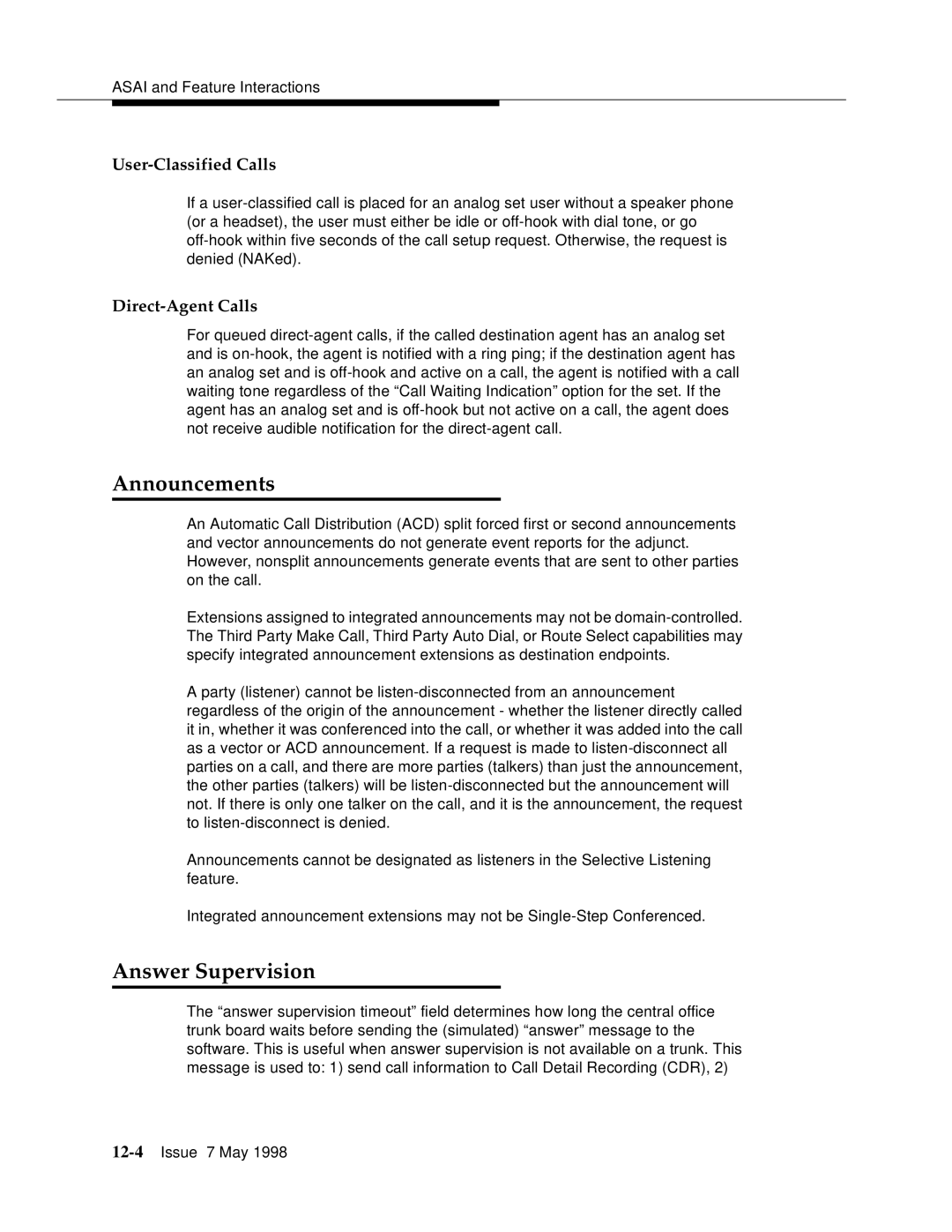
ASAI and Feature Interactions
User-Classified Calls
If a
Direct-Agent Calls
For queued
Announcements
An Automatic Call Distribution (ACD) split forced first or second announcements and vector announcements do not generate event reports for the adjunct. However, nonsplit announcements generate events that are sent to other parties on the call.
Extensions assigned to integrated announcements may not be
Aparty (listener) cannot be
Announcements cannot be designated as listeners in the Selective Listening feature.
Integrated announcement extensions may not be
Answer Supervision
The “answer supervision timeout” field determines how long the central office trunk board waits before sending the (simulated) “answer” message to the software. This is useful when answer supervision is not available on a trunk. This message is used to: 1) send call information to Call Detail Recording (CDR), 2)
